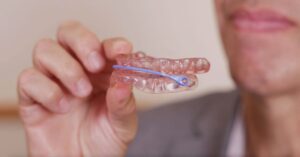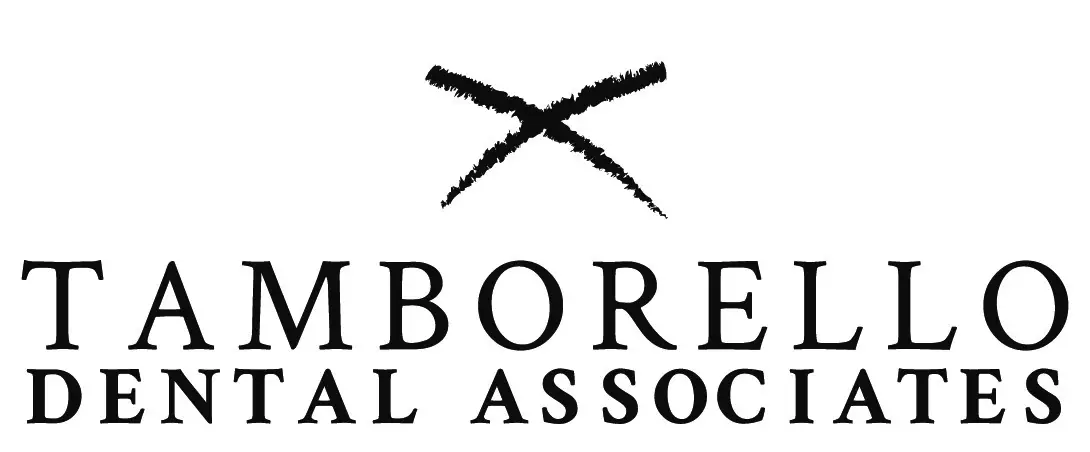Navigating the world of oral appliances can be a daunting task.
With many options available, making an informed decision requires a comprehensive understanding of the various alternatives.
This article aims to guide you through the process, providing insights into the different types of oral appliances, their benefits and drawbacks, and how they compare to other sleep apnea treatments, such as CPAP machines.
This guide will be valuable for patients seeking relief from sleep apnea symptoms and dental professionals who want to recommend the best options.
We'll delve into the specifics of oral appliance therapy, from the initial consultation to fitting and adjustment, and even touch on insurance coverage and cost considerations.

By the end of this article, you will have the knowledge to decide on the best oral appliance for your needs.
Understanding Oral Appliances and Their Role in Sleep Apnea Treatment
Oral appliances are medical devices designed to treat sleep apnea, a condition characterized by repeated interruptions in breathing during sleep.
These devices maintain an open, unobstructed airway in the throat, allowing for standard breathing patterns throughout the night.
There are two main types of oral appliances used in sleep apnea treatment:
- Mandibular Advancement Devices (MADs)
- Tongue Retaining Devices (TRDs)
MADs work by moving the lower jaw forward, preventing airway collapse. On the other hand, TRDs hold the tongue in place, preventing it from falling back and obstructing the airway.
Dental professionals custom-fit Both devices, ensuring a comfortable and practical fit.
Oral appliances have emerged as a popular alternative to Continuous Positive Airway Pressure (CPAP) machines, particularly for patients with mild to moderate sleep apnea.
While CPAP remains the gold standard for severe sleep apnea, oral appliances offer a less invasive, more comfortable option for many patients.
In the following sections, we'll explore the specifics of these oral appliance options, including their benefits and drawbacks and how they compare to CPAP machines.
Comparing Oral Appliances to CPAP: Pros and Cons
When it comes to treating sleep apnea, both oral appliances and CPAP machines have their unique advantages and disadvantages.
CPAP machines are highly effective in treating even severe cases of sleep apnea. They deliver a constant stream of pressurized air to keep the airway open. However, some patients find them uncomfortable and intrusive, leading to low compliance rates.
Conversely, oral appliances are less invasive and more comfortable for many patients. They are also portable, making them a convenient option for frequent travelers. However, they may not be as effective as CPAP in severe cases of sleep apnea.
Here's a quick comparison:
- CPAP Machines
- Pros: Highly effective, suitable for severe cases
- Cons: Can be uncomfortable, noisy, and challenging to travel with
- Oral Appliances
- Pros: Less invasive, more comfortable, portable
- Cons: May not be suitable for severe cases, requires regular dental check-ups
Ultimately, the choice between an oral appliance and a CPAP machine should be based on individual needs, severity of sleep apnea, and personal comfort.
Types of Oral Appliances Available
Mandibular Advancement Devices (MADs)
Mandibular Advancement Devices (MADs) are among the most common oral appliances used to treat sleep apnea. They work by moving the lower jaw forward, which helps keep the airway open during sleep. MADs are often adjustable, allowing for a customized fit and comfort level.
However, MADs may only suit some patients, and some may experience discomfort or jaw pain. Regular dental check-ups are necessary to monitor any potential teeth or jaw alignment changes.
Tongue Retaining Devices (TRDs)
Tongue-retaining devices (TRDs) are another oral appliance used to treat sleep apnea. Unlike MADs, TRDs work by holding the tongue forward rather than moving the jaw. This prevents the tongue from blocking the airway during sleep.
While TRDs can be effective, they may take some time to get used to. Some patients may find them uncomfortable at first. However, with regular use, most people adapt to the sensation.
Custom-Fit vs. Over-the-Counter Oral Appliances
When it comes to oral appliances, there are both custom-fit and over-the-counter options available. Custom-fit appliances are made to fit your mouth precisely, offering greater comfort and effectiveness—a dental professional designed and adjusted them, ensuring a perfect fit.
On the other hand, over-the-counter appliances are less expensive but may not fit as well. They may not be as effective in treating sleep apnea and can even cause dental problems if not fitted correctly. Therefore, custom-fit appliances are generally recommended for treating sleep apnea.
Selecting the Right Oral Appliance: Factors to Consider
Choosing the right oral appliance involves considering several factors. These include the severity of your sleep apnea, jaw structure, dental health, and personal comfort. The device's adjustability and potential side effects should also be considered.
Here are some key factors to consider when selecting an oral appliance:
- Severity of sleep apnea
- Jaw structure and dental health
- Comfort and ease of use
- Adjustability of the device
- Potential side effects
- Cost and insurance coverage
Remember, a professional consultation is crucial for making an informed decision. Your dentist or sleep specialist can help you choose the most suitable appliance.
The Importance of FDA Approval and Professional Consultation
When considering oral appliance options, looking for devices that have received FDA approval is crucial. This ensures that the appliance has met stringent safety and efficacy standards. FDA-approved devices are more likely to provide effective treatment and minimize potential side effects.
In addition to FDA approval, professional consultation is key. A sleep specialist or dentist experienced in dental sleep medicine can provide valuable insights. They can assess your needs and guide you toward the most suitable oral appliance. Remember, each patient is unique, and what works best for one person may not be the best choice for another.
Oral Appliance Therapy: The Process from Consultation to Fitting
The process of oral appliance therapy begins with a professional consultation. This involves thoroughly examining your oral and maxillofacial anatomy and discussing your sleep apnea symptoms and severity. A sleep study or polysomnography may also be required to accurately diagnose your condition and determine the most effective treatment approach.
Once an oral appliance has been deemed suitable, the next step is fitting it. This involves taking dental impressions and registering to create a custom-fit device. The appliance is then adjusted to ensure maximum comfort and effectiveness. Regular follow-up appointments are necessary to monitor treatment progress and make any necessary adjustments.
Side Effects and Patient Compliance
Like any treatment, oral appliance therapy can have side effects. These may include discomfort, dry mouth, excessive salivation, and changes in bite. However, most side effects are minor and can be managed with adjustments to the appliance or temporary use of other treatments.
Patient compliance is a crucial factor in the success of oral appliance therapy. Factors that can influence compliance include:
- Comfort and fit of the appliance
- Severity of sleep apnea symptoms
- Patient's understanding of the importance of treatment
- Regular follow-up and support from healthcare providers
Understanding these factors can help improve compliance and ensure the effectiveness of the treatment.
Insurance Coverage and Cost Considerations for Oral Appliances
The cost of oral appliances can vary widely, depending on the type of device and the provider. Some health insurance policies may cover part or all of the price, especially if a healthcare provider prescribes them to treat sleep apnea.
However, checking with your insurance company to understand what is covered and what you may need to pay out-of-pocket is essential. Some providers offer payment plans or other financing options to help make oral appliance therapy more affordable.
Conclusion: Making an Informed Decision on Oral Appliance Therapy
Choosing the right oral appliance is crucial in managing sleep apnea effectively. It requires a thorough understanding of the available options, their pros and cons, and how they fit into your lifestyle and health needs.
Remember, the goal is to improve your sleep quality and overall health. Therefore, it's essential to consult with healthcare professionals, consider all factors, and make an informed decision. With the right oral appliance and proper use, you can significantly reduce sleep apnea symptoms and enhance your quality of life.
See what we offer if you've ever thought about improving your sleep. Schedule a consultation and experience the warmth, professionalism, and transformative power of sleep at Houston Sleep Associates. Your journey to a brighter, more confident day begins with a single step. Let's take it together!
Other Related Sleep Apnea Articles:
1. How to Keep My Airway Open without a CPAP Machine? (houstonsleepassociates.com)
2. Oral Appliance Therapy to Stabilize Airway in Respiratory Care (houstonsleepassociates.com)
3. Do mouth pieces work for sleep apnea? - Houston Sleep Associates
4. Improving Quality of Rest: The Benefits of Oral Appliances (houstonsleepassociates.com)
5. Improving Sleep Apnea: The Best Sleeping Position Revealed (houstonsleepassociates.com)

